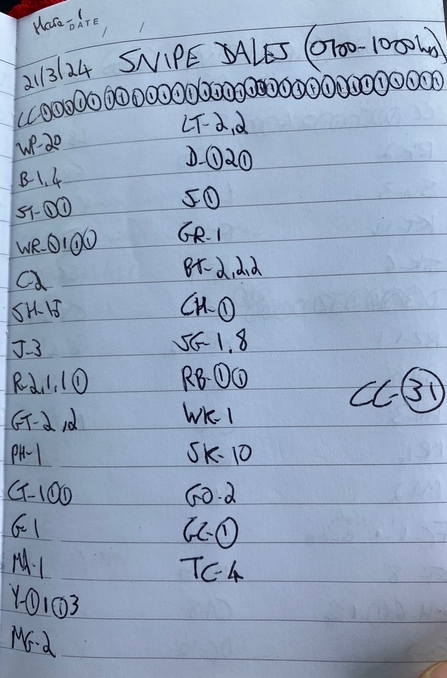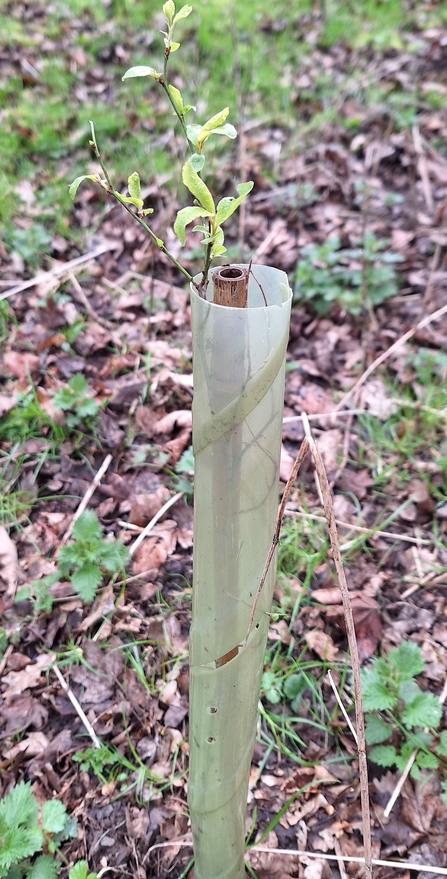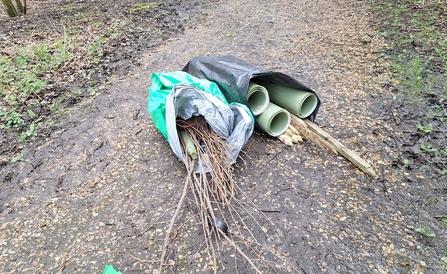When I arrived at Snipe Dales for my latest visit, I spotted another Lincolnshire Wildlife Trust truck in the car park that wasn’t James’. Richard Doan, the assistant warden for Coast and The Wash, was here in the reserve doing a bird survey. This is something that takes place early morning every year when spring arrives, and it a good way to keep track of the residents and new spring visitors of Snipe Dales, such as the chiffchaff which were in full voice that morning. James had been here with Richard from just before 7am, listening and looking out for the various species. I was very lucky that when I arrived, they were just about to do a final loop of one of the paths in the Country Park and I was invited along to see them at work. Richard is known in the Trust for his impressive ear for birds but witnessing it in person was something else. One moment we were mid-conversation and the next he was adding another name to the list that he had heard faintly in the distance whilst I was none the wiser. I would have been convinced he was making it all up if it not for either spotting the bird through a pair of binoculars he let me borrow, or from him playing what the bird sounded like through his phone and then listening for that sound in real life.
Warden's Work - Snipe Dales in March
Snipe Dales in February

Richard was also talking me through the code he uses for each bird, and it would be too time consuming to write out each species every time. There were also different symbols for if you only heard or saw the bird or both. It was incredible to realise just how many different species there were in a small place. It is easy when you are walking through the trees to hear the chorus of birds singing and not think of them as individual songs from lots of different birds. I definitely need to practice my bird sounds, which I have been doing slowly on a free app on my phone called ‘Merlin’. You can use it whilst walking along to record the sounds you’re hearing and the app matches them with the bird it is coming from. Like most things, it just takes practice, although I think it might be a very long time before I catch up with Richard!
After the excitement of the bird survey, we headed back to the Warden’s office and prepared for the rest of the day. The focus was on tree planting this time around. It is quite late on to be tree planting, but due to various circumstances out of our control, the trees arrived late, so there was a real sense of urgency. There were around 300 trees sent to Snipe Dales to be planted, and I had timed it nicely to be there for the last ones. It was a full house on the day, with me, James and two volunteers, Andy and Dave. It was my first time meeting Dave, who used to be a prison officer, and it was great to see yet another person with a completely different background finding themselves now volunteering in conservation.

As we made our way out on site, we checked over trees that had been recently planted to monitor how they were getting on. It was nice to see some showing signs of life and according to Dave they were always the ones he had planted! It is a real struggle to get established as a tree with many things to combat in their early stages, from the extreme weather and the large populations of deer that are often stripping the forest floor. The covering around the tree and the stake in the ground are there to help give them the best chance to grow. A really interesting thing that I learnt from James was not to tie the tree too tightly to the stake, as a little movement in the wind is good for the tree as it encourages the roots to get established and get a stronger hold in the ground for when that support is taken away from them.

As we made our way on foot around the Country Park with trees, tree guards and stakes, it was time to start planting the last batch of trees for the year. I went ahead with James as he planned out where to plant the trees whilst Andy and Dave followed behind, planting the ones James had left. It was an efficient system and we made great progress around the Country Park, filling in the gaps. I often felt like I was watching a painter completing a canvas as James plotted out where to put which tree. The patches of green that were emerging with spring were filling in the basic sketch of the bare branches that were there throughout winter. There was more to choosing where to plant a tree than I would have thought, with different trees thriving better in different conditions and soils, and growing in different ways that would affect those around them. You are always having to think three steps ahead and plan not just for this year but for years ahead.

I can imagine as a reader it would not be very interesting to read the same process of planting each tree which took up almost the whole day, but it was amazing to be there actually doing it and was very rewarding at the end of it. You could see evidence of woodland management all over as we walked past felled pines that were now rotting and creating a wonderful home for invertebrates on the forest floor. Because the Country Park is such a young woodland, there is constant management that needs to happen to get it established and thriving in years to come. I can't wait to see the difference between this month's visit and next month's when spring arrives in full. I think it will be one of the biggest transitions that Snipe Dales goes through in such a short time as those greens all finally push through and the plants and butterflies once again take centre stage.

